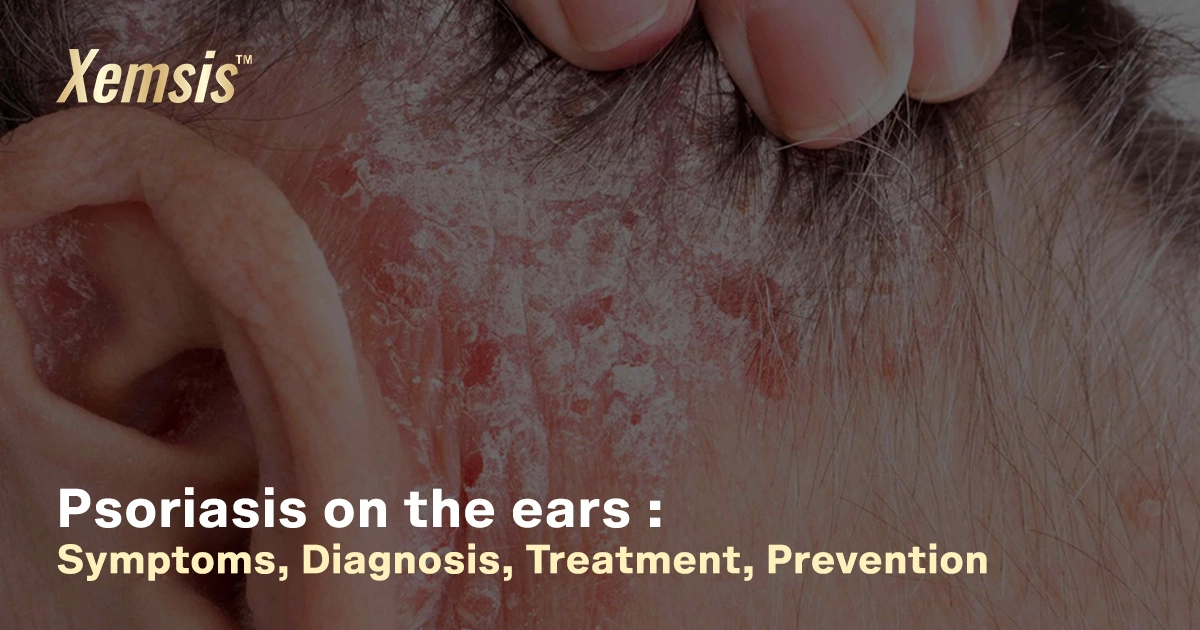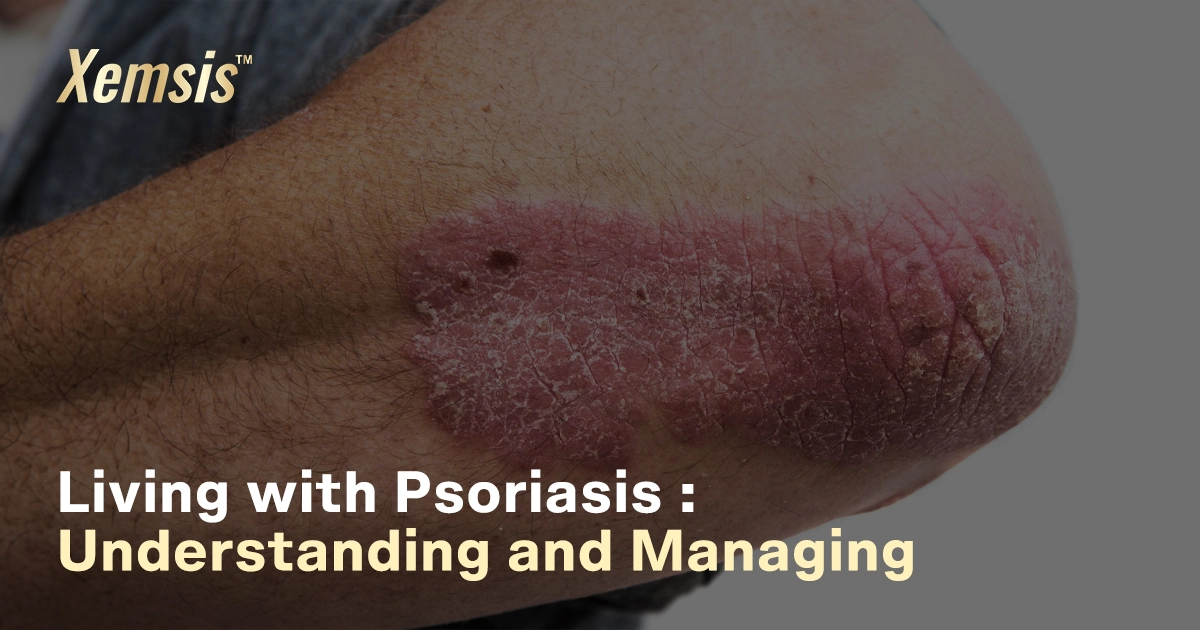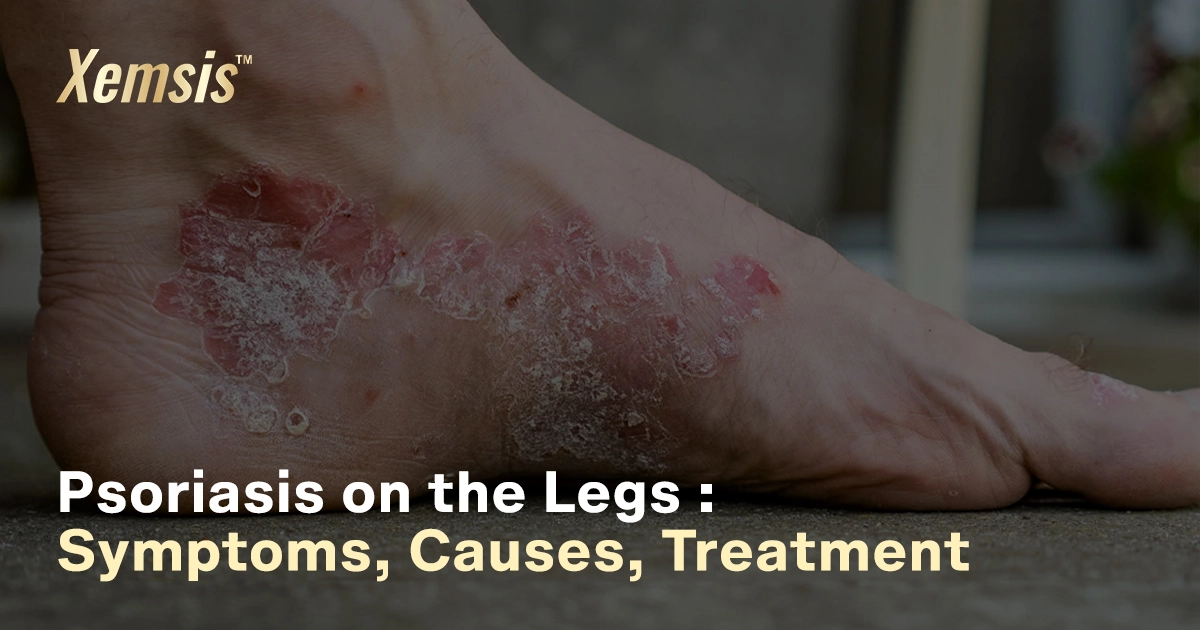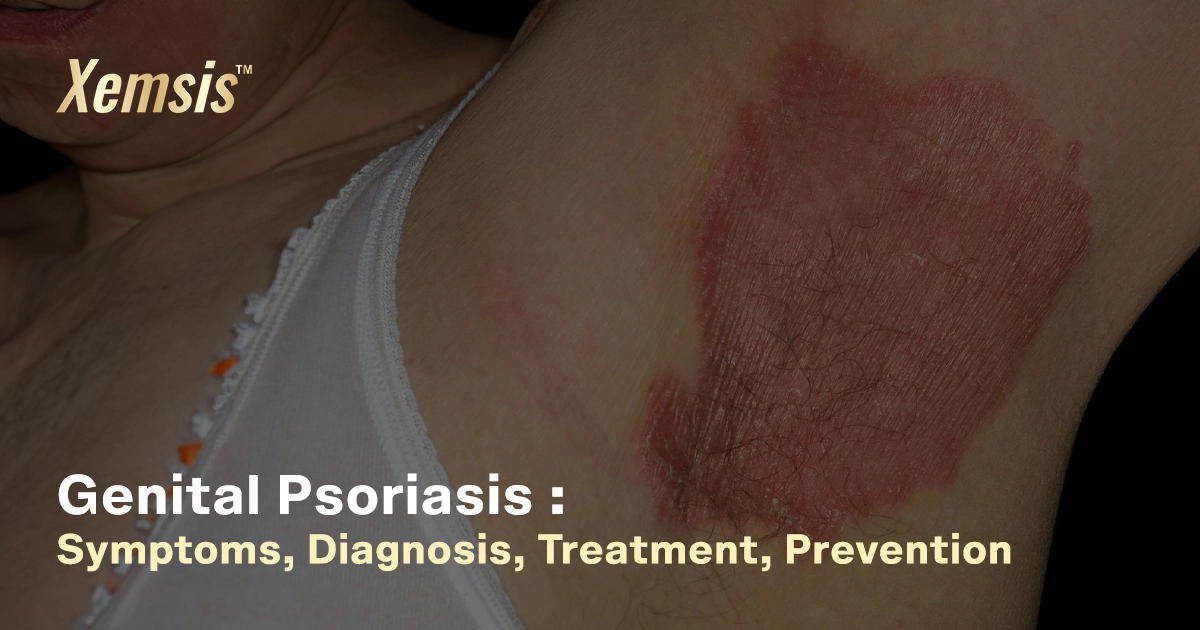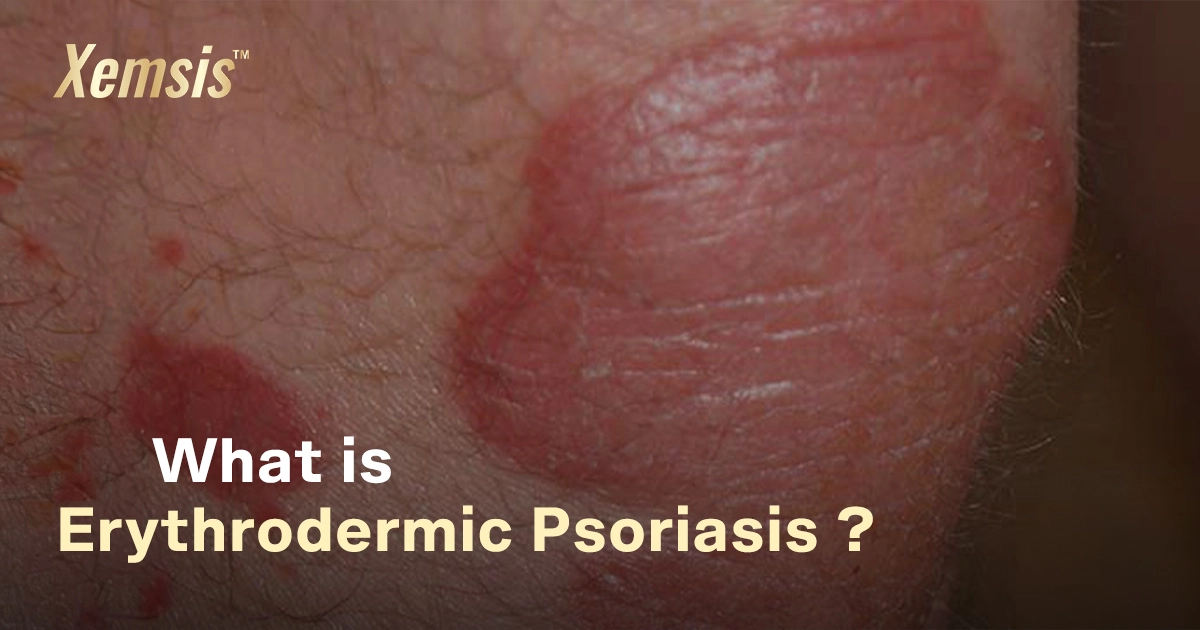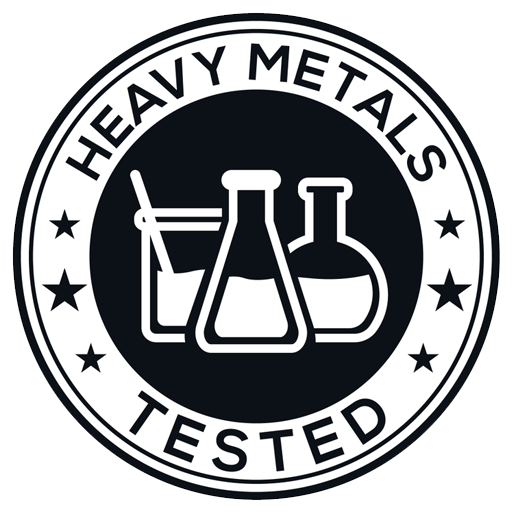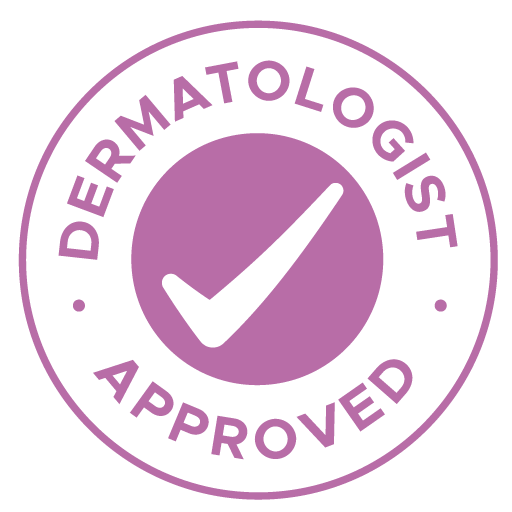Psoriasis on the Legs: Symptoms, Treatment, and Management
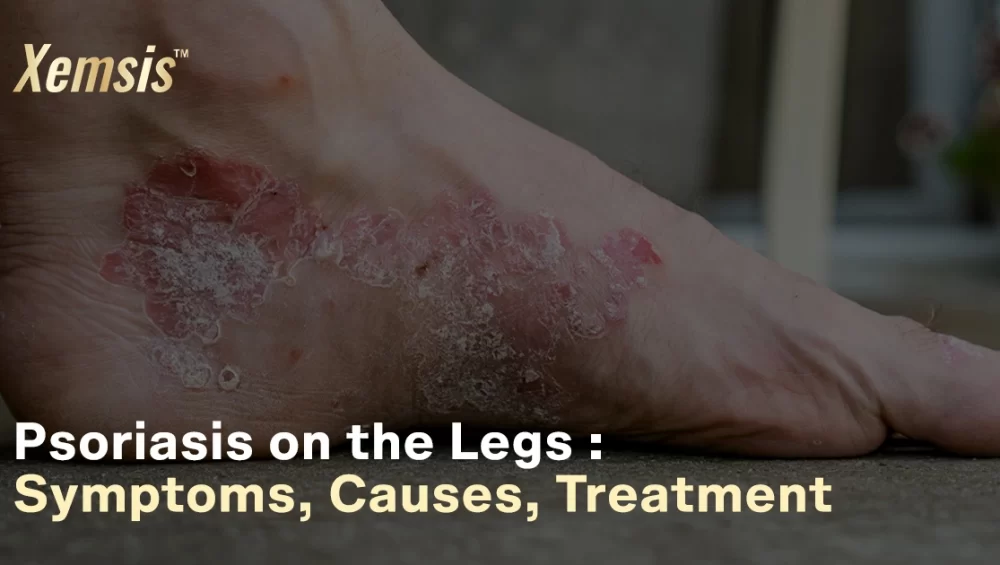
Psoriasis on the Legs
Psoriasis on the legs is not a separate form of psoriasis. Still, many types of psoriasis, including plaque, inverse, guttate, pustular, erythrodermic, and psoriatic arthritis, can affect various regions of the legs like the knees, feet, groins, and thighs. Though this condition looks severe and infectious, it’s not contagious and won’t spread through any medium. The symptoms are usually flaky, itchy, inflamed, and cause skin discoloration.
Overview
Appearance of psoriasis on the legs
As many types of psoriasis can occur in the legs, their appearance changes for each type of psoriasis, such as inflammation, reddish patches, silvery plaques, or skin discoloration in brown, purple, or gray. Scratching of the affected areas due to excess itching may cause permanent scars on the skin.
Symptoms
Let’s see how different types of psoriasis have different symptoms on the legs.
| Types | Symptoms |
|---|---|
| Inverse Psoriasis | This type causes shiny, itchy, and reddish rashes in the skin fold area of the legs, i.e., the groins. |
| Erythrodermic psoriasis | This type is rare and severe and causes reddish, scaly, and itchy patches that are inflamed and spread to larger areas. It can occur in any part of the leg. |
| Guttate Psoriasis | This type causes several drop-like, reddish lesions that can spread to any part of the legs. This condition usually occurs with a throat infection as the first sign. |
| Pustual Psoriasis | This type causes pus-filled bumps that can be itchy and painful. Mostly, it occurs in the feet but can also occur in other regions of the legs. |
| Psoriatic Arthritis | This is a dangerous type of psoriasis that causes excess swelling and inflammation with silvery scales in the joints of the legs. This condition develops severely over time and causes corrosion in the bones. This condition can be life-threatening if left untreated. |
Causes and triggers
The exact cause of psoriasis on the legs has not been proven yet. However, the condition causes the immune system to overreact, which leads to the rapid production of new skin cells. For a healthy person, the skin cells usually shed and grow every 30 days. But for people with psoriasis, these new skin cells grow rapidly in 3 to 4 days. As the process is very quick, the dead skin cells accumulate on the surface of the skin in the legs instead of shedding. These accumulations affect the skin, causing psoriasis on the legs as inflammation, patches, flakes, scales, or plaques.
Other conditions that can trigger the growth of psoriasis on the legs are:
- High dosages of certain medications
- Overexposure to UV rays from the sun
- Excess Stress
- Hormonal changes
- Allergic reactions from bacterial or viral infections
- History of family genetics with psoriasis
- Poor environmental factors
- External injuries like wounds, cuts, burns, or insect bites
- Consumption of alcohol and tobacco products.
Treatment for psoriasis on the legs
- Topical Medicines: If you have small and less severe symptoms of psoriasis on the legs, doctors provide effective ointments like Xemsis or lotions and creams that have anti-inflammatory properties and reduce psoriatic symptoms. Oatmeal has excellent soothing properties and can be taken as an oatmeal bath to reduce the irritation caused by psoriasis on the legs.
- Oral Drugs: If your symptoms are a little severe, doctors may provide medications containing methotrexate or immunosuppressants that have ingredients to calm down your psoriatic flare-ups. These medications may have complex dosages and side effects. So doctors may recommend avoiding some food types. It’s crucial to follow their guidelines.
- Injections: To relieve you from excess pain and itching, doctors may recommend biological treatments or injections with antibiotics and pain medications.
- Phototherapy: If your symptoms in the legs are fatal, doctors may recommend this phototherapy treatment. This treatment involves the process of passing ultraviolet lasers to your affected areas on the legs. The process is complex and may have some side effects.
- Other than these, it is crucial to follow home remedies like maintaining a balanced diet, managing stress through meditation or yoga, and preferring acupuncture therapy with a licensed practitioner.
Summary
Psoriasis on the legs can be very challenging, affecting self-confidence and quality of life, depending on the type of psoriasis. Medications and treatments work in stages to relieve you of the condition. This condition can also be life-threatening if it is not treated properly. So it’s crucial to follow your doctor’s guidelines and stay positive.
Xemsis is an ointment formulated with effective natural ingredients after many years of research. It is prescribed by many dermatologists across India to treat psoriasis. Get relief from psoriatic symptoms in the legs today with Xemsis.
Reference
- Medical News Today: https://www.medicalnewstoday.com/articles/psoriasis-on-legs
- 2. My Psoriasis Team: https://www.mypsoriasisteam.com/resources/psoriasis-on-the-legs-how-it-looks-and-what-it-feels-like

